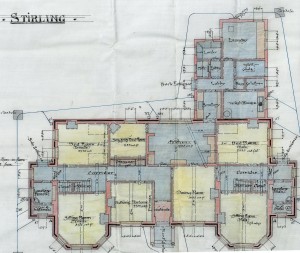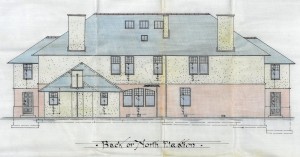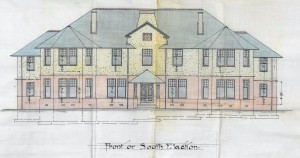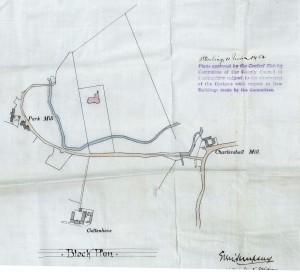In 1904, plans were drawn up by architect William Simpson for a Convalescent Home in Chartershall. It was to be part of Stirling Royal Infirmary and would accommodate sixteen patients along with staff. The building was opened on 28th July 1906 by the Duchess of Montrose.
The origins of the building stemmed from a letter of a friend of Rev H. A. Graham of Rednock to the Treasurer of Stirling Royal Infirmary in 1897. He wanted to make a specific donation for the erection of a ‘convalescent cottage hospital’ connected and affiliated to Stirling Royal Infirmary. In the end over £7000 was subscribed to the home with the principal donor the friend of Rev H. A. Graham of Rednock. The building was constructed for sum of £4390.
On the front gable of the building was a medallion of Queen Victoria. It was carved from red stone by sculptor and architect Albert H Hodge. Albert Hodge was born in Port Ellen in Islay in 1875. He had previously studied at the Glasgow School of Art and moved to London in 1901.
Hodge worked on many famous buildings throughout the United Kingdom including the British Museum. Residents of Stirling may be familiar with another of Hodge’s work. He created the statue of Robert Burns which stands on Albert Place, near the Albert Halls.
The opening ceremony for the Victoria Memorial Convalescent Home was attended by a large crowd with speeches given by the Treasurer and Chairman of Stirling Royal Infirmary. A special key, made by jewellers Messrs D & J Stew of Port Street, Stirling, was presented to the Duchess of Montrose.
The site plan for the building shows that the home was to be situated near the former Chartershall and Park Mills. The location was remote and inaccessibility, along with the small size of the hospital, meant that the home was difficult to reach and not economical. The Convalescent Home remained open until after Second World War when it was replaced by the Touch House Auxiliary Hospital. The building is now a private home and was renamed Chartershall House.



